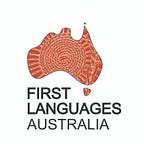Case study — School programs and Māori language revitalisation in New Zealand
Prepared by Arathi Raghunathan, for Global Lessons: Indigenous languages and multilingualism in school programs
The Māori immersion program is a successful model of language revitalization. Indigenous peoples around the world look to Māori for inspiration, leadership and guidance. The revival began in the 1970s, as part of a broader movement for recognition of Māori sovereignty. Speaker numbers had dropped radically since the 1930s and Māori were concerned they might lose their language.
Kōhanga Reo (language nests) began in 1982 as a grassroots movement, to provide a total Māori language immersion program for young children and their families, staffed by adults speaking only Māori.
The Māori Language Commission was set up under the Māori Language Act 1987 to promote the use of Māori as a living language and as an ordinary means of communication. Now over 460 Kōhanga Reo operate with more than 9,000 Māori pre-school children enrolled. In addition to Kōhanga Reo (pre-school), Maori is used as the medium of instruction in ura kaupapa, wharekura and wānanga (primary and secondary schools and tertiary institutes operating under Māori custom). There are also special character schools at primary and secondary level providing Maori immersion programs, bilingual schools and schools that have bilingual units. It’s important to note that all students speak English before commencing school, as a home and community language.
The Ministry of Education allocates funding based on the proportion of teaching in Māori; the higher the level of immersion, the higher the funding. Level 1 Māori-medium programs have the highest proportion of teaching in Māori (between 81% and 100%). In Level 2 programs the children are taught in Māori for between 51% and 80% of the time. Level 3 is between 31% and 50% and Level 4 is between 12% and 30% of the time.
New Zealand Ministry of Education evaluations of Maori-medium programs found Level 2 programs in Māori and English programs to be effective, ‘as long as at least 50% of the teaching is in Māori’.
Overall, the Ministry finds that ‘a ‘whole school’ immersion program has some advantages over other programs in that it can create a positive environment for children to learn Māori. It creates an ‘additive’ environment which values te reo Māori throughout the school, and where te reo Māori is not overshadowed by English as the mainstream language’.
The Ministry of Education recommends that Māori students spend at least six years in Māori immersion programs, as research shows that it takes longer to learn a second language at school to the same academic level as a first language. The end result, however, is being able to read and write well in two languages (biliteracy). Becoming biliterate, or being able to read and write in two languages, is the key educational advantage that students in Māori-medium education will have over students in English-medium contexts. Māori-medium schools teach academic English as a subject around Grade 4 or 5. This is because, like academic Māori, it is not just picked up naturally — academic English also needs to be specifically taught.
The Ministry sets a high benchmark for educators, who ‘need to be able to speak, write and read fluently in Māori and in English, as they must be able to teach subjects in both languages’. However, being fluent in both languages is not enough, as teachers must also ‘understand how children and young people learn a second language and they must know the best methods for teaching a second language’. Recruiting and training staff to this level of expertise was identified as a key challenge in the 2004 review of Maori Bilingual education (May et al. 2004).
Key lessons from Māori case study
· Language revitalisation is possible through education programs and action outside of schools
· Strong rigorous Immersion programs lead to bilingual, biliteracy and academically successful students
· Strong commitment to education infrastructure — teacher training, curriculum development and a language commission is required.
References
Hornberger, N. H. (2009). Multilingual Education Policy and Practice: Ten Certainties (Grounded in Indigenous Experience). 24 (2), Retrieved 28 September 2017 from http://repository.upenn.edu/wpel/vol24/iss2/1 doi10.1017/S0261444808005491
Soldier, L. L. (Ed.). (2009). Building on Experiences of Māori & Hawaiian Language Revival. Indigenous Language Institute. New Mexico. Retrieved September 28, 2017, from http://www.ilinative.org/share/publications/AcrossBordersOnlineFormat.pdf
Education Counts. Ministry of Education. New Zealand Government (2017). Bilingual Education in Aotearoa/New Zealand (Website — need to look up website citation protocol)
